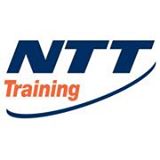|
2017 National Electrical Code® On-Site Training
This three-day course provides an excellent introduction to the NEC® along with practical navigation exercises. Course Description/AgendaWhether running power to a new piece of electrical equipment, setting the overloads on a motor starter, installing a security camera, or replacing fluorescent ballast; compliance with the NEC® is mandatory. The Code will be officially rolling out later this year and many states will be adopting this as law. NTT Training teaches the NEC® throughout the United States and to global organizations in various international locations.
The 2017 National Electrical Code® is being adopted by many states for industry-wide electrical standards. Whether you are experienced with electrical systems, or are simply looking for an introductory NEC® Seminar, this training will significantly increase your knowledge and confidence. The electric code regularly changes, so both experienced electricians as well as people new to the NEC® will benefit from NTT Training’s practical and in-depth National Electrical Code®. Typical professions taking the seminar include:
Understanding the 2017 National Electrical Code® and NEC® Applications. This three-day course provides an excellent introduction to the NEC® along with practical navigation exercises. The 2017 NEC® major changes are addressed throughout the course for those seeking Code updates. Typical field applications challenge both the novice and the experienced electrical worker. This training covers topics most needed by electrical workers including the requirements for grounding and bonding, properly sizing conductors and overcurrent protection for different applications, wiring methods, motor installation and other general equipment specifics and, special topics as requested by attendees. NTT Training also offers additional training on specific industry applications of the NEC®.
Introduction & Overview Successful Code navigation requires an overview of NEC purpose, content and layout, and how to identify changes. Basic requirements of Articles 90 and 110. Termination and torque requirements, working spaces and, arc flash hazard labeling.
Grounding & Bonding Identified by the NFPA as the most misunderstood topic in the NEC, NTT instructors remove the confusion as they explain the "why and how" of Article 250. Performance requirements of 250.4, sizing EGC’s, GEC’s and grounded conductors, installation methods, system grounding, separately derived systems, bonding requirements and, grounding of systems over 1000 volts.
Wiring & Protection Branch circuits, feeders, fuses, circuit breakers are all parts of the distribution system that run from the utility service to the individual loads and all must be properly sized and installed. Chapter 2 in-depth information: Sizing feeders and branch circuits in facilities, overcurrent selection and sizing, surge arresters and protective devices.
Wiring Methods & Materials Installing conductors, cables and conduits properly is necessary for an electrically safe installation. Chapter 3 in-depth topics: Ampacity calculations, box fill, pull-box sizing, cover requirements, typically used cables and conduit installation requirements and, cable tray.
Equipment For General Use Everyday installation and maintenance electrical work is addressed on typical equipment, such as; motors, plant lighting, HVAC equipment, panelboards to switchgear and, industrial control panels. Selected articles from Chapter 4, Equipment for General Use: Motors, HVAC type equipment, Industrial control panel installation, typical commercial and industrial lighting applications, and requirements for panelboards, switchboards and switchgear.
Special Occupancies, Equipment & Conditions, Communication Systems Based on student needs, specific industry topics are reviewed. Overview of typical articles include hazardous locations, temporary installations, emergency systems, fire alarm systems and some communications circuits.
|
 Add to favorites
Add to favorites Email this page
Email this page
|
||||||||||||


 On-Site Training
On-Site Training Seminar
Seminar